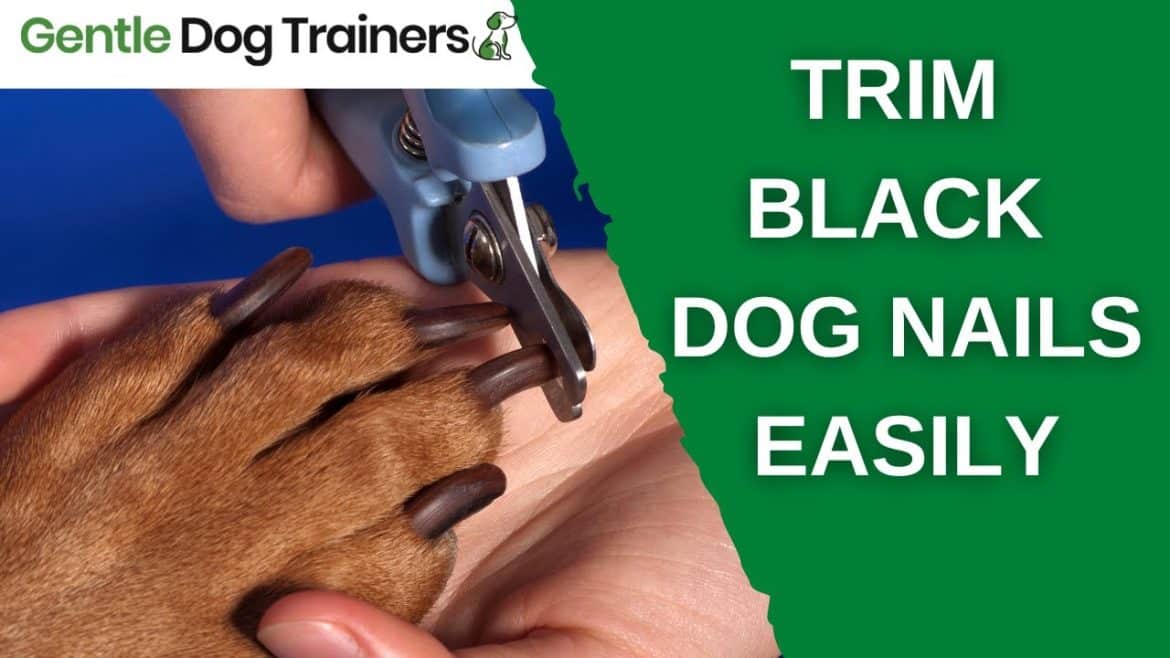If you've ever been nervous about trimming your dog's black nails, fear no more! In this article, you will learn the art of safely and confidently trimming your furry friend's nails. We'll provide you with step-by-step instructions, helpful tips, and essential tools to ensure a stress-free experience for both you and your dog. Say goodbye to the anxiety of accidentally cutting too far and hello to a perfectly manicured pup. Let's dive in and become masters of trimming your dog's black nails!
Understanding the importance of trimming your dog's nails
Trimming your dog's nails is an essential part of their overall care and well-being. Not only does it help prevent accidents and injuries, but it also maintains good paw health and improves your dog's mobility and comfort. Neglecting to trim your dog's nails can lead to a range of problems, including pain, infection, and difficulty walking. By prioritizing nail trimming, you are ensuring your furry friend's safety and happiness.
Preventing accidents and injuries
Long and overgrown nails can cause accidents and injuries to both you and your dog. If your dog's nails are too long, they can easily get caught in carpets, furniture, or other surfaces, leading to painful accidents. Additionally, when nails become overly long, they can cause your dog's toes to splay, making them more susceptible to injuries. Regularly trimming your dog's nails significantly reduces the risk of these accidents and keeps them safe and secure.
Maintaining good paw health
Trimming your dog's nails is crucial for maintaining good paw health. Overgrown nails can curl and dig into your dog's paw pads, causing discomfort and pain. These curled nails can also result in ingrown nails, which can become infected and require medical attention. By keeping your dog's nails at an appropriate length, you are preventing these issues and promoting overall paw health.
Improving your dog's mobility and comfort
Just like humans, dogs rely on their feet and nails for mobility. Overgrown nails can make it difficult for your dog to walk properly, as they may experience pain and discomfort with every step. Regular nail trimming helps your dog maintain a natural gait and move freely without any hindrance. By ensuring proper nail length, you are enhancing your dog's mobility and overall comfort.
Choosing the right tools for the job
When it comes to trimming your dog's nails, having the right tools is essential. There are various types of nail trimmers available, including guillotine-style clippers, scissor-style clippers, and grinder tools. Each type has its own advantages and disadvantages, so it's important to understand them to make an informed decision.
This image is property of qph.cf2.quoracdn.net.
Understanding the different types of nail trimmers
Guillotine-style clippers work by inserting the nail into a hole and squeezing the handles, which causes a blade to cut through the nail. Scissor-style clippers function similarly to regular scissors, where the blade slides past a stationary edge, cutting the nail. Grinder tools, on the other hand, work by spinning a small grinding bit that gradually files down the nail.
Selecting the appropriate size and style for your dog
Choosing the right size and style of nail trimmers for your dog is crucial to ensure a safe and effective trimming. For smaller dogs or puppies, opt for smaller-sized trimmers that can comfortably fit their nails. Larger dogs may require a stronger and more robust trimmer. Consider the thickness and strength of your dog's nails when selecting the appropriate trimmer. Consulting with a veterinarian or professional groomer can provide valuable guidance in choosing the right tool for your specific dog.
Exploring alternative options for nail trimming
If your dog is particularly anxious or uncomfortable with traditional nail clippers, there are alternative options to explore. Nail grinders offer a different approach by filing down the nail instead of cutting it. This method can be beneficial for dogs who have sensory sensitivities or fear of the sharp trimming motion. Additionally, professional groomers can provide specialized services, including gentle handling techniques and sedation if necessary, to ensure a stress-free nail trimming experience for your dog.
Preparing your dog for a successful nail-trimming session
Preparing your dog for a nail-trimming session is crucial for a positive and stress-free experience. Many dogs are wary and fearful of having their nails trimmed, so taking the time to get them comfortable and relaxed is essential.
Getting your dog comfortable with nail handling
Gradually introducing your dog to the concept of nail trimming is vital in helping them feel more at ease. Start by gently touching and handling their paws and nails without actually trimming them. Pair this touch with treats or praise to create positive associations. Over time, your dog will become more accustomed to nail handling and less apprehensive during actual nail trims.
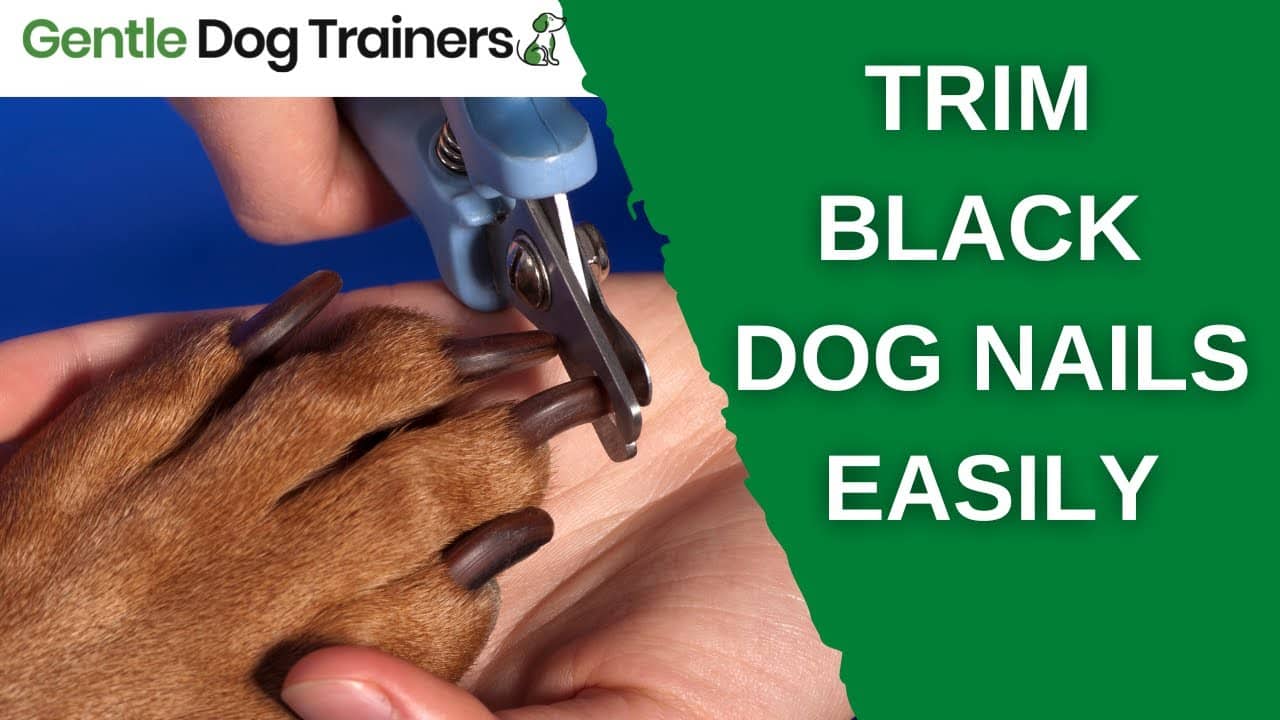
This image is property of i.ytimg.com.
Ensuring a calm and stress-free environment
Creating a calm and stress-free environment is crucial for a successful nail-trimming session. Find a quiet and well-lit area where you can comfortably trim your dog's nails without distractions. Minimize external noises or disturbances that might startle or upset your dog. Additionally, maintain a calm demeanor and speak in a soothing voice to help relax your furry friend.
Gathering the necessary supplies
Before starting a nail-trimming session, ensure that you have all the necessary supplies on hand. This includes the appropriate nail trimmers, styptic powder or cornstarch to stop bleeding if accidents occur, treats for positive reinforcement, and a towel or blanket to provide comfort and stability for your dog during the process. Having all these items readily available will make the process smoother and more efficient.
Mastering the technique of trimming your dog's black nails
Trimming black nails can be more challenging than trimming lighter-colored nails, as it can be difficult to see the quick, the sensitive part of the nail that provides blood supply. However, with the right technique and some important tips, you can confidently trim your dog's black nails without causing discomfort or injury.
Identifying the quick
The quick is the area of the nail that contains a blood vessel and nerve endings. It is essential to avoid cutting into the quick while trimming your dog's nails, as it can cause pain and bleeding. When dealing with black nails, it's important to be extra cautious and start by trimming small increments to minimize the risk of hitting the quick. If you accidentally cut into the quick and it starts bleeding, apply styptic powder or cornstarch to stop the bleeding.
Trimming the nails in small increments
When trimming black nails, it's best to proceed with caution and trim the nails in small increments. By trimming off a little bit at a time, you can gradually get closer to the desired length without risking cutting into the quick. Periodically check the cut edge of the nail for any signs of the quick. If you start seeing a grayish or pinkish oval shape in the center of the nail, stop trimming as you have reached the quick.
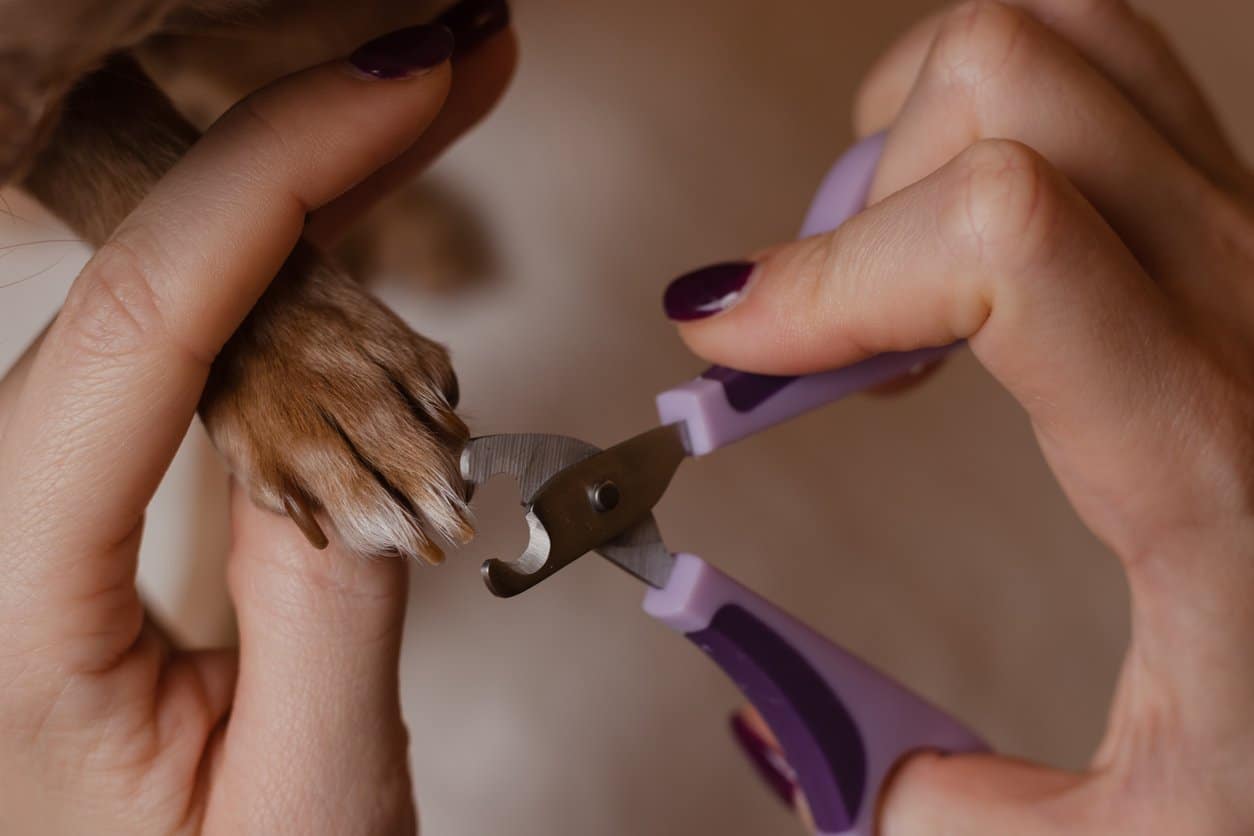
This image is property of images.squarespace-cdn.com.
Using proper positioning and support
Maintaining proper positioning and support of your dog's paw during nail trims is crucial for both the safety of your dog and the effectiveness of the trimming session. Hold your dog's paw firmly but gently, ensuring they are comfortable and secure. If needed, utilize a gentle grip to prevent any sudden movement that could result in accidental cuts. Providing stability and support will help your dog feel more at ease during the process.
Utilizing visualization techniques
Trimming black nails requires a level of visualization and estimation of the quick. To help with this, try visualizing a line from the pad of the paw straight through the nail. This imaginary line can give you a rough estimation of the location of the quick. By keeping this visualization in mind, you can better judge how much to trim and avoid cutting into the sensitive area of the nail.
Dealing with common challenges and potential risks
While nail trimming is generally a straightforward process, there are some common challenges and potential risks that dog owners may encounter. Being prepared and knowledgeable about how to handle these situations is crucial for the safety and well-being of your dog.
Handling nail injuries or bleeding
Accidents can happen, and it's not uncommon for a nail to get accidentally cut too short, resulting in bleeding. In these situations, it's important not to panic. Apply firm pressure with styptic powder or cornstarch to the bleeding nail to help stop the bleeding. Keep your dog calm and still to prevent further injury. If the bleeding persists or you are unsure how to handle the situation, contact your veterinarian for guidance.
Addressing your dog's fear or resistance
Some dogs may exhibit fear or resistance when it comes to nail trimming. This can be due to negative past experiences or a general aversion to having their paws touched. Patience and positive reinforcement are key in helping address these fears. Gradually desensitize your dog to the process by taking it slow and rewarding them with treats and praise. If the fear or resistance persists, consider seeking the help of a professional dog trainer or behaviorist to assist in overcoming these challenges.
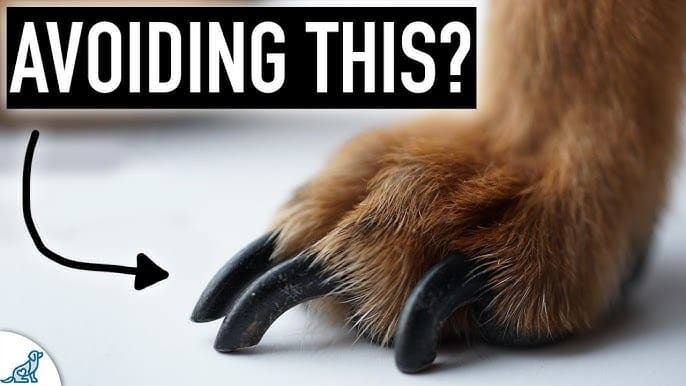
This image is property of i.ytimg.com.
Seeking professional help when necessary
If you find that you are unable to trim your dog's nails safely or effectively, don't hesitate to seek professional help. Veterinarians and professional groomers have the experience and expertise to handle even the most challenging nail trims. They can provide sedation, specialized tools, and techniques to ensure a stress-free and successful nail-trimming session for your dog.
Practicing regular maintenance and upkeep
Regular maintenance and upkeep of your dog's nails are integral to their overall health and well-being. Establishing a nail care routine, monitoring nail length and condition, and checking for signs of infection or discomfort are essential tasks for every responsible dog owner.
Establishing a nail care routine
By establishing a regular nail care routine, you can ensure that your dog's nails are consistently maintained at a safe and appropriate length. Depending on your dog's individual needs, this routine may involve trimming their nails every 1-4 weeks. Consistency is key in preventing overgrowth and maintaining good paw health.
Monitoring nail length and condition
Regularly checking your dog's nail length and condition is important for identifying any potential issues. Nails that are too long or curling inward should be trimmed. Pay attention to any signs of brittleness, cracking, or changes in color, as these can indicate underlying health concerns. If you notice any abnormalities, consult with your veterinarian.
Checking for signs of infection or discomfort
During your regular nail care routine, take the opportunity to examine your dog's paws for any signs of infection or discomfort. Look out for redness, swelling, discharge, or a foul odor, as these can indicate an infection or other health issue. If you notice anything concerning, seek veterinary attention to address the problem promptly.
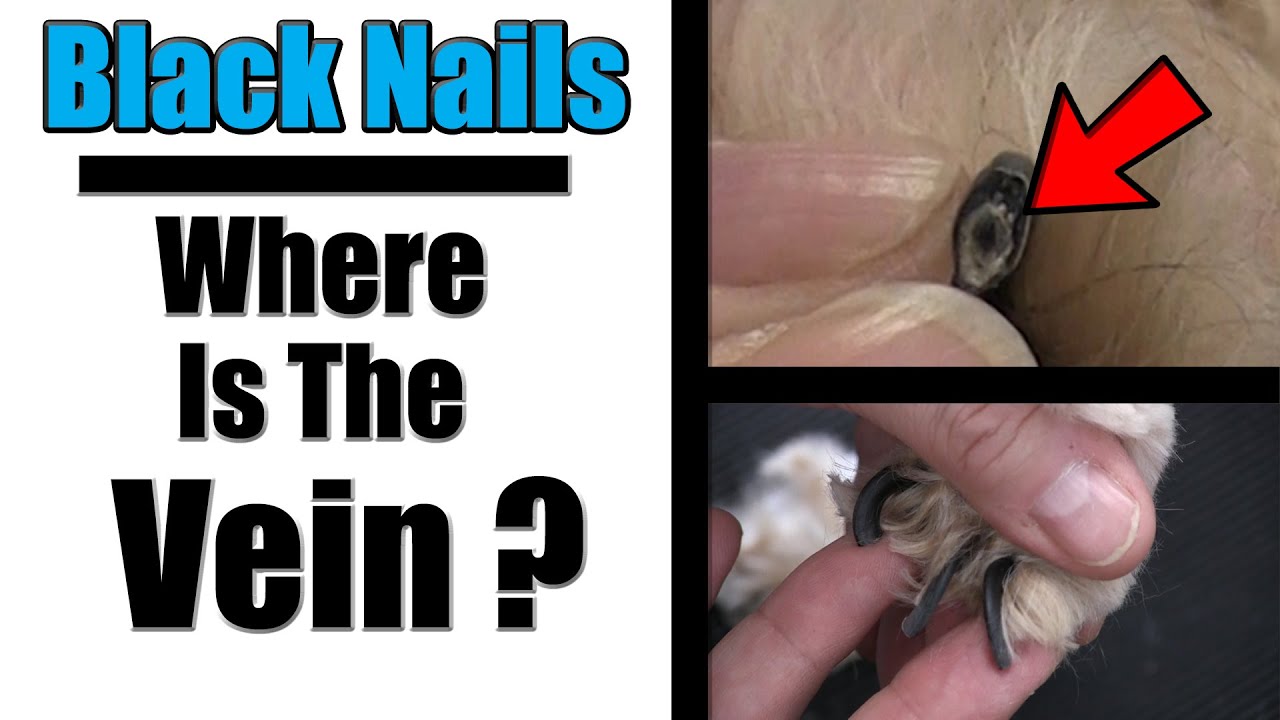
This image is property of i.ytimg.com.
Exploring alternatives to traditional nail trimming
While traditional nail trimming methods are effective for most dogs, they may not be suitable for every dog's needs and temperament. Exploring alternative options can provide a solution for dogs who are particularly sensitive or resistant to nail trims.
Using nail grinding or filing techniques
Nail grinders or files are an alternative to traditional clippers and can be less intimidating for dogs who are fearful of the clipping motion. These tools gradually file down the nail, smoothing any sharp edges. It's important to introduce your dog to the grinding or filing sensation gradually, using positive reinforcement and rewards to create positive associations.
Investigating professional grooming options
Professional groomers offer a range of specialized services to maintain your dog's nail health. They have experience in handling a variety of dogs and can tailor their techniques to suit your dog's specific needs. From gentle handling to sedation options, professional groomers can provide a stress-free and efficient nail-trimming experience.
Considering natural wear and tear
For some dogs, their lifestyle and environment naturally wear down their nails. Regular exercise on hard surfaces such as asphalt or concrete can help naturally file down the nails. However, it's important to monitor the length and condition of the nails regularly, as some dogs may still require additional trimming or maintenance.
Educating yourself on dog nail anatomy and health
To ensure the safety and well-being of your dog during nail trimming, it's essential to educate yourself on dog nail anatomy and health. Understanding the structure of a dog's nail, identifying abnormalities or issues, and learning about nail-related health conditions can help you make informed decisions and provide appropriate care for your furry friend.
Understanding the structure of a dog's nail
A dog's nail is composed of a hard outer shell known as the nail plate, which covers the quick, the sensitive part of the nail that contains blood vessels and nerves. The quick is easier to see in lighter-colored nails but can be more challenging to identify in black or dark-colored nails. The nail bed, located beneath the nail plate, provides support and nourishment to the nail.
Identifying abnormalities or issues
Regularly inspecting your dog's nails can help identify any abnormalities or issues that may require attention. Look out for cracks, splits, or changes in color or texture. Overgrown or excessively long nails can cause discomfort and hinder your dog's mobility. If you notice any concerns, consult with your veterinarian for further evaluation and guidance.
Learning about nail-related health conditions
Certain health conditions can manifest in changes to the nail. Infections, tumors, and fungal infections can all affect a dog's nails. Pay attention to any swelling, redness, discharge, or changes in the nail bed. If you suspect any nail-related health conditions, seek veterinary advice for proper diagnosis and treatment.
Finding additional resources and support
If you have any questions or concerns about trimming your dog's nails, rest assured that there are many resources and support networks available to assist you.
Consulting with a veterinarian or professional groomer
Your veterinarian or a professional groomer are excellent sources of information and guidance when it comes to nail trimming. They can provide you with personalized advice based on your dog's specific needs and circumstances. Take advantage of their expertise to ensure that you are providing proper nail care for your furry friend.
Joining online communities or forums
Online communities and forums dedicated to pet care and dog owners can provide a wealth of knowledge and support. These platforms allow you to connect with fellow dog owners who may have experienced similar challenges or have valuable tips to share. Engaging in these communities can provide you with additional resources and a support system to lean on.
Attending workshops or training sessions
Consider attending workshops or training sessions specifically designed to educate dog owners on proper nail trimming techniques. These sessions often provide hands-on demonstrations, expert advice, and an opportunity to ask questions. Participating in such events can boost your confidence and equip you with the necessary skills to safely and effectively trim your dog's nails.
Celebrating your success and your dog's happiness
Once you have mastered the art of trimming your dog's nails and established a positive routine, take the time to celebrate your success and your dog's happiness.
Recognizing the positive impact of nail trimming
Regular nail trimming has a significant positive impact on your dog's life. By keeping their nails at an appropriate length, you are providing them with comfort and preventing potential health issues. Celebrate the fact that you are actively involved in your dog's well-being and are ensuring their overall happiness.
Rewarding your dog for a job well done
During and after each successful nail-trimming session, be sure to reward your dog for their cooperation and patience. Treats, praise, or playtime can serve as positive reinforcement for their good behavior. By associating nail trimming with positive experiences, you are strengthening the bond between you and your furry friend.
Enjoying the benefits of a well-maintained dog's nails
Finally, take a moment to appreciate the benefits of a well-maintained dog's nails. Your dog will experience increased comfort, improved mobility, and reduced risk of accidents or injuries. Enjoy the peace of mind that comes with knowing you are providing the best care possible for your beloved pet.
In conclusion, understanding the importance of trimming your dog's nails is vital for their overall health and well-being. By choosing the right tools, preparing your dog properly, mastering the technique, and addressing potential challenges, you can confidently and safely maintain your dog's nail health. Regular maintenance, exploring alternative options, educating yourself on nail anatomy, and utilizing additional resources will further enhance your ability to provide the best care for your beloved furry friend. Celebrate your success and enjoy the benefits of a happy and well-maintained dog with neatly trimmed nails.

